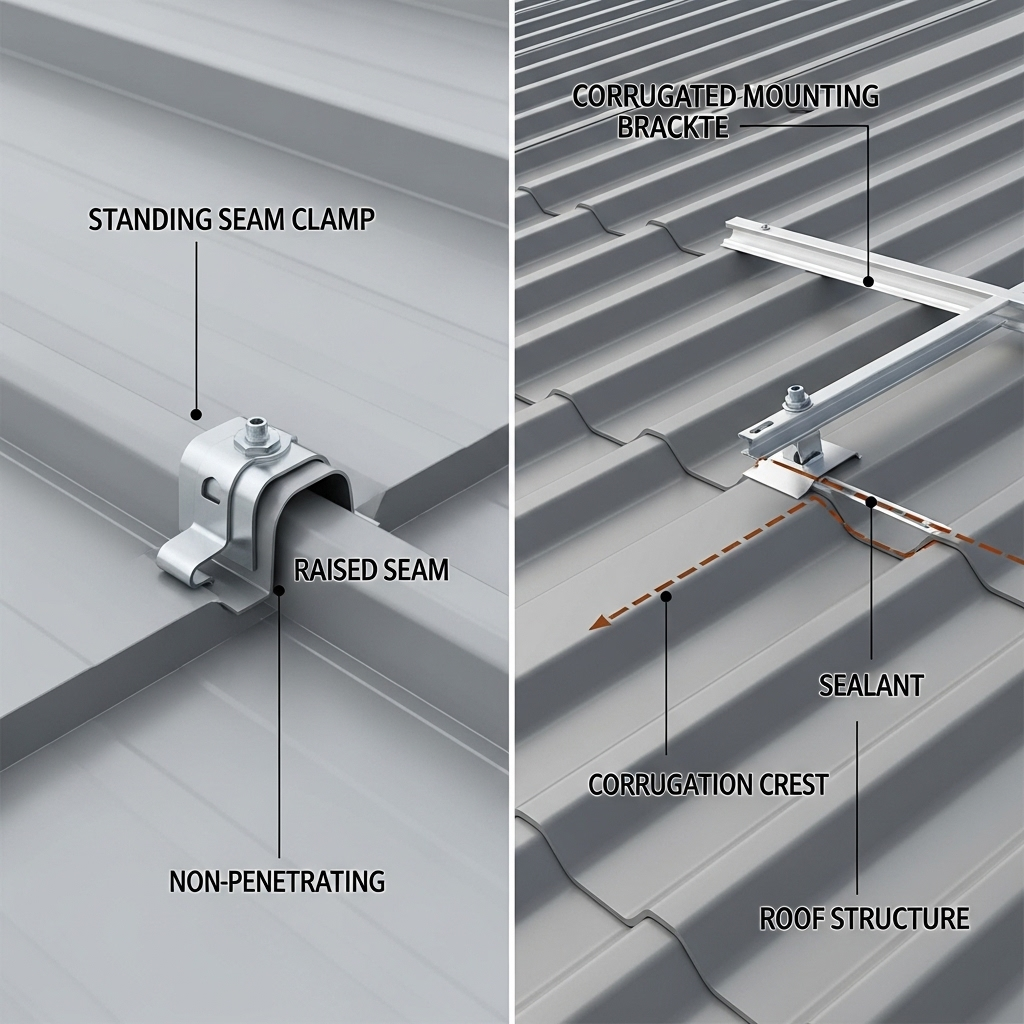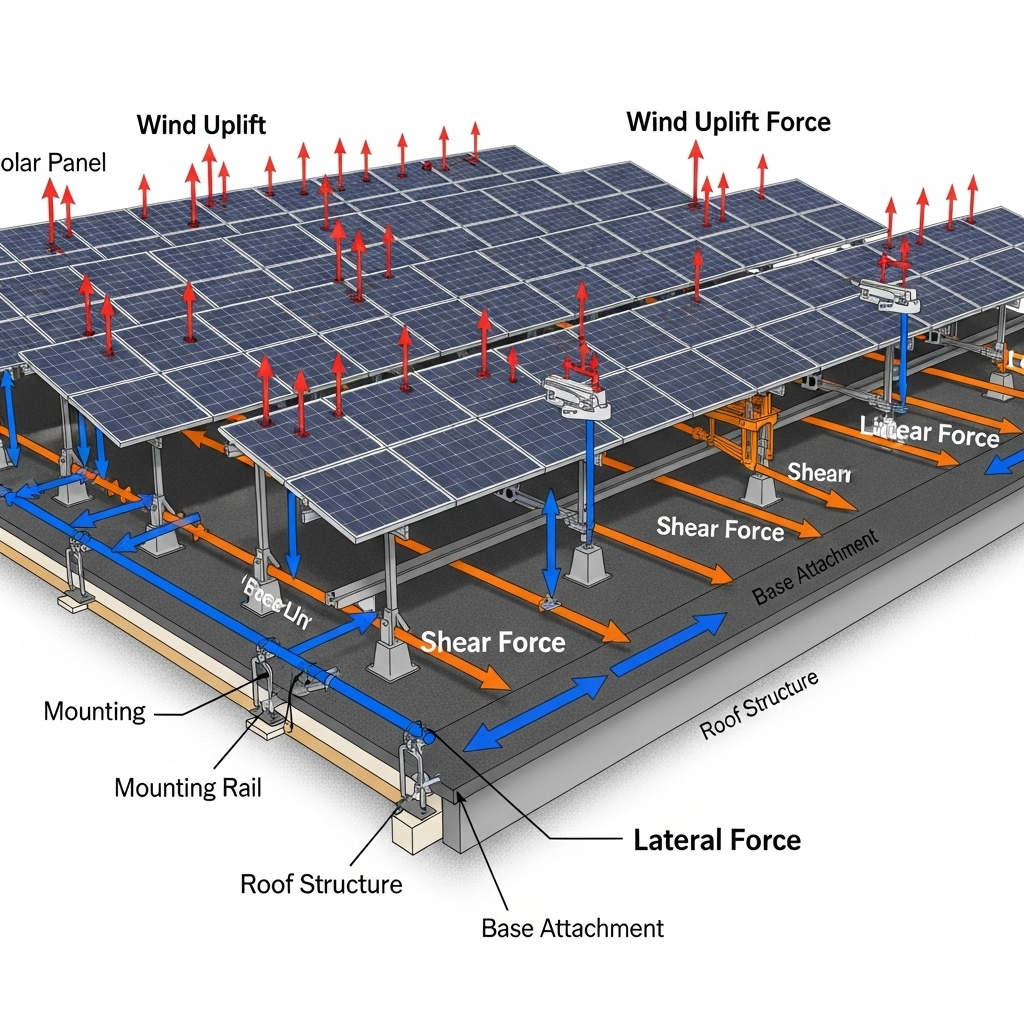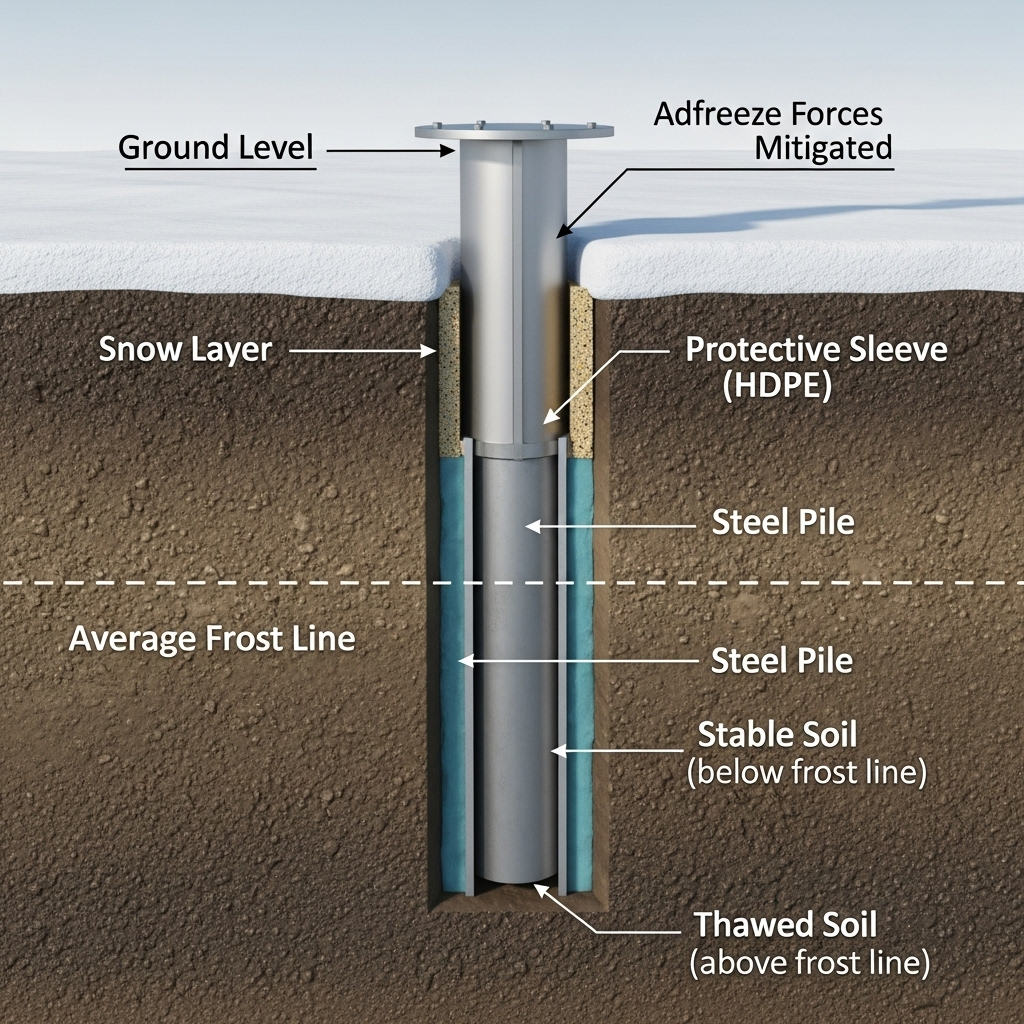Choosing the right roof mounting system is foundational to a solar array's safety, performance, and longevity. For properties with metal roofing, the decision often comes down to the specific type of panel profile: standing seam or corrugated. Each requires a distinct mounting strategy, centered on specialized clamps. Understanding the differences between a standing seam clamp and a corrugated panel clamp is crucial for protecting your roof and your energy investment.

Understanding the Roof Types: A Foundation for Mounting
Before comparing the hardware, it's important to recognize the fundamental differences in the roof structures themselves. The roof's design dictates the appropriate solar panel installation clamps and methods.
The Anatomy of a Standing Seam Roof
Standing seam roofs feature vertical metal panels joined by raised, interlocking seams. These seams are elevated above the roof's flat surface, which is the primary drainage plane. This design is highly effective at preventing water intrusion. The panels are typically made of painted steel or aluminum and are known for their durability and modern aesthetic. Their key advantage for solar installations is that the raised seams provide a strong attachment point without needing to create holes in the roof.
The Profile of a Corrugated Metal Roof
Corrugated metal roofing is characterized by its repetitive wavy or ribbed pattern. This classic design adds structural rigidity to the metal sheets. It is a common and often more economical choice for residential, agricultural, and commercial buildings. Unlike standing seam roofs, corrugated panels lack a raised seam suitable for clamping. Therefore, securing a solar mounting system almost always involves penetrating the surface of the metal panels to reach the underlying structure.
The Mechanics of Solar Panel Clamps
The clamps designed for these two roof types operate on entirely different principles. One is a non-penetrating grip, while the other relies on a secure, sealed penetration.
Standing Seam Clamps: The Non-Penetrating Solution
A standing seam clamp is an innovative piece of hardware designed to attach directly to the raised rib of the roof panel. It consists of a small block of aluminum, often with one or more set screws. When tightened, these set screws apply precise pressure, compressing the clamp onto the seam without piercing the metal. This creates a secure anchor point for the solar racking rails. Because there are no holes, the roof's original warranty and water-tight integrity remain completely intact. Clamps are available in various shapes to fit different seam profiles, such as trapezoidal, rounded, or vertical.
Corrugated Panel Clamps: Securing to the Structure
Mounting on a corrugated roof requires a different approach. The most common method uses a bracket, sometimes called an L-foot, that is fastened through the metal panel and into the rafters or purlins below. The process involves drilling a pilot hole through the crest of the corrugation, applying a durable butyl sealant around the hole, and then driving a lag bolt or structural screw through the bracket into the wood or metal structure. The compression of the fastener and the sealant creates a watertight seal. The success of this method depends entirely on meticulous installation to prevent future leaks.
Key Comparison Points: Installation, Cost, and Reliability
When evaluating standing seam vs corrugated mounting options, three factors are paramount: the installation process, the overall cost, and the system's long-term performance.
Installation Process and Speed
Installing a solar array with standing seam clamps is generally faster and simpler. Installers can quickly attach clamps along the seams at specified intervals without the need to locate underlying rafters or spend time carefully sealing penetrations. This reduces labor time on the roof. In contrast, mounting on a corrugated roof is more labor-intensive. It requires accurately mapping out rafter locations, drilling dozens of holes, and ensuring every penetration is perfectly sealed—a process that demands precision and expertise.
Cost Analysis: Hardware and Labor
The costs associated with each system present a trade-off between hardware and labor. Standing seam clamps are specialized components and typically have a higher per-unit cost than the brackets and fasteners used for corrugated roofs. However, the reduced labor time can help offset this expense. The overall project cost can often be competitive for both.
| Factor | Standing Seam Mounting | Corrugated Mounting |
|---|---|---|
| Hardware Cost | Higher per clamp | Lower per bracket |
| Labor Intensity | Lower | Higher |
| Leak Risk | Extremely Low (Non-penetrating) | Low to Moderate (Depends on installation quality) |
| Required Tools | Torque wrench, basic hand tools | Drill, stud finder, sealant gun, torque wrench |
Long-Term Reliability and Maintenance
From a reliability standpoint, non-penetrating standing seam clamps offer a distinct advantage. By avoiding holes in the roof, they eliminate the primary point of failure for roof-mounted solar systems: water leaks. This results in minimal maintenance needs over the system's 25+ year lifespan. For corrugated systems, the reliability of each penetration point is only as good as the quality of the installation. While a professionally installed system with high-quality sealants is very reliable, these points remain a potential vulnerability that may benefit from periodic inspection.
Making the Right Choice for Your Project
The choice between clamp types is largely dictated by your existing roof. However, if you are planning a new roof and a solar installation simultaneously, these factors can guide your decision.
When to Choose Standing Seam Clamps
Standing seam clamps are the superior choice for any standing seam roof. They are particularly beneficial if your roof is new or still under warranty, as this method preserves its integrity. It is also the preferred method in regions with heavy rain or snow, where minimizing the risk of leaks is a top priority. The speed of installation can also be a deciding factor for projects on a tight schedule.
When Corrugated Clamps Are a Better Fit
Corrugated mounting systems are the standard, effective solution for buildings with existing corrugated metal roofs. While they require penetrations, a certified installer using high-quality materials can create a durable, weather-tight installation. This method is also suitable for budget-conscious projects where the lower upfront hardware cost is a key consideration, provided the installation is performed to the highest standards.
The Role of System Performance
A secure physical mount is the bedrock of your system, but achieving optimal energy output involves more. A stable foundation ensures your panels maintain the ideal orientation and tilt for maximum sun exposure, as discussed in reports like the IEA's Next Generation Wind and Solar Power. For a comprehensive analysis of system efficiency, battery performance, and key metrics, the Ultimate Reference for Solar & Storage Performance provides detailed insights into maximizing your energy production and usage.
Final Considerations for a Secure Installation
Ultimately, the debate between standing seam and corrugated mounting solutions is about balancing risk, cost, and efficiency. Standing seam systems offer a nearly risk-free, non-penetrating solution at a higher hardware cost. Corrugated systems provide a reliable, cost-effective method that hinges on expert installation. Regardless of the method, using high-quality, engineered components and entrusting the work to qualified professionals are essential. This approach ensures your solar array is not only productive but also a safe and secure asset for decades to come.
Frequently Asked Questions
Can you attach solar panels to any standing seam roof?
Most standing seam roofs are suitable for solar panel installation using non-penetrating clamps. However, the specific profile of the seam (e.g., trapezoidal, bulb, or snap-lock) determines the exact type of clamp required. It is essential to use a clamp that is specifically designed and tested for your roof's seam profile to ensure a secure attachment without damaging the panel.
How do you prevent leaks when mounting on a corrugated roof?
Preventing leaks is a multi-step process. First, penetrations should always be made on the 'crest' or high point of the corrugation, not in the 'valley' where water flows. Second, a high-quality, long-lasting sealant like butyl tape should be applied between the mounting bracket and the roof surface. Finally, the fastener should have a rubber EPDM washer that compresses to form a watertight seal when torqued to the correct specification.
Do standing seam clamps ever damage the roof seam?
When the correct clamp is used and installed properly, it will not damage the roof seam. These clamps are designed to grip the seam using compressive force from set screws. It is critical to tighten the set screws to the manufacturer's specified torque value. Over-tightening can potentially dent the seam, while under-tightening can result in an insecure mount. Using a calibrated torque wrench is non-negotiable for a proper installation.





Leave a comment
All comments are moderated before being published.
This site is protected by hCaptcha and the hCaptcha Privacy Policy and Terms of Service apply.